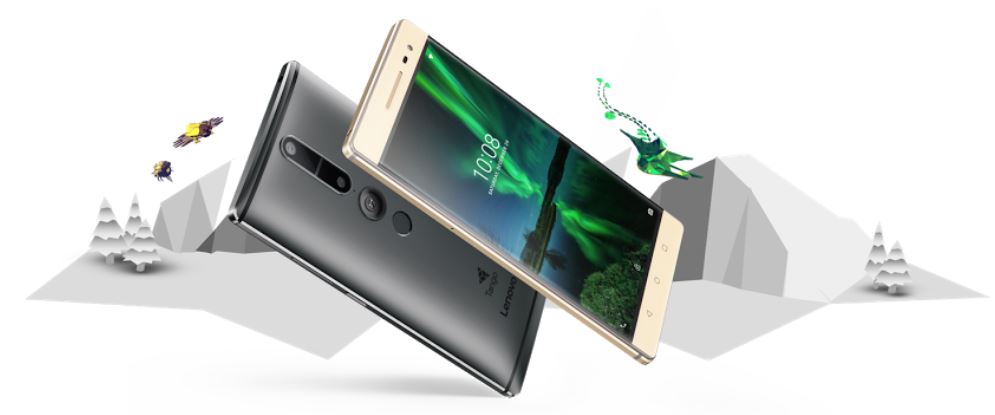Google Will Shut Down Project Tango, Focus On ARCore
Google announced that it will kill its more research-oriented and augmented reality-focused Project Tango. The company will invest in the more mainstream ARCore platform that should work on many of the higher-end Android smartphones in the future.
Project Tango
Tango, originally named Project Tango, was an augmented reality (AR) computing platform developed by Google’s Advanced Technology and Projects (ATAP) division. The idea behind Tango was to put the most advanced computer vision and AR algorithms in mobile devices and enable those devices to “see” the world around us as we do.
Google also hoped third-party developers would create all sorts of user experiences that would incorporate indoor navigation, 3D mapping, physical space measurement, environmental recognition, and so on.
However, the hardware requirements, which included not just specialized computer vision processors, such as Movidius’ Myriad VPU, as well as multiple wide-angle and depth cameras, seem to have been too high for regular smartphones. Google’s initial Tango-enabled tablet cost $1,024. Lenovo launched a $500 Tango smartphone in 2016, but it was quickly discontinued, presumably because it made too many compromises in terms of hardware components that consumers were expecting to get with the price tag.
New ARCore AR Platform
Last summer, Google announced ARCore, a new AR platform that doesn’t need special hardware and sensors, but also isn’t quite as advanced as Tango, as it can’t see the world in 3D. However, the platform does seem to need powerful enough smartphones, such as the latest Pixel 2 and Samsung’s Galaxy S8, S8+, and Note 8 smartphones. Google also promised that in the coming months over 100 million smartphones will have access to ARCore.
As more smartphones gain wide-angle and telephoto cameras, as well as powerful computer vision/machine learning chips (such as the latest Pixel 2), it may be possible to upgrade ARCore to be at least as advanced as Tango was in a few years.
Shutting Down Tango
Google’s Tango team announced that it will shut down Tango this spring to focus on ARCore:
Get Tom's Hardware's best news and in-depth reviews, straight to your inbox.
We’re turning down support for Tango on March 1, 2018. Thank you to our incredible community of developers who made such progress with Tango over the last three years. We look forward to continuing the journey with you on ARCore.
As Tango didn’t seem to have any future anyway neither with consumers nor with smartphone manufacturers, killing it seems to make sense. If Google can show some usefulness for its ARCore AR platform as well as high adoption, it can just continue to improve that platform until smartphones become more capable of seeing the world as well or better than we we do in 3D.
Lucian Armasu is a Contributing Writer for Tom's Hardware US. He covers software news and the issues surrounding privacy and security.
-
bit_user I didn't even think this was news. I heard about it months ago.Reply
Few points about this:■ That tablet was from 2014 and they quickly dropped the price to $512. But it was a developer kit, so still not worth reading too much into that pricing. It had not only a Myriad 1, but also used Nvidia's Tegra K1.20496918 said:the hardware requirements, which included not just specialized computer vision processors, such as Movidius’ Myriad VPU, as well as multiple wide-angle and depth cameras, seem to have been too high for regular smartphones. Google’s initial Tango-enabled tablet cost $1,024.
■ Both the Lenovo and ASUS phones had only a Qualcomm Snapdragon SoC, with no additional vision processor or GPU. The only special hardware they had was a second camera (not uncommon, in high-end phones) and a depth sensor.
As more smartphones gain wide-angle and telephoto cameras, as well as powerful computer vision/machine learning chips (such as the latest Pixel 2), it may be possible to upgrade ARCore to be at least as advanced as Tango was in a few years.
No, depth sensors and stereo cameras are complementary. If you need accurate scene geometry, then the depth sensor is required for cases with low texture, high scene complexity, or poor lighting. Conversely, stereo is required for longer ranges and brightly lit environments.
As Tango didn’t seem to have any future anyway neither with consumers nor with smartphone manufacturers, killing it seems to make sense.
It seemed to be paving the way for Hololens-style AR glasses. Given that we still don't have that (except for Microsoft's), then it's hard to justify.
If Google can show some usefulness for its ARCore AR platform as well as high adoption, it can just continue to improve that platform until smartphones become more capable of seeing the world as well or better than we we do in 3D.
I hope so. Last I checked, ARCore was functionally inferior to Tango, even on the same hardware. I developed some non-public apps for my employer that you cannot make with ARCore.
